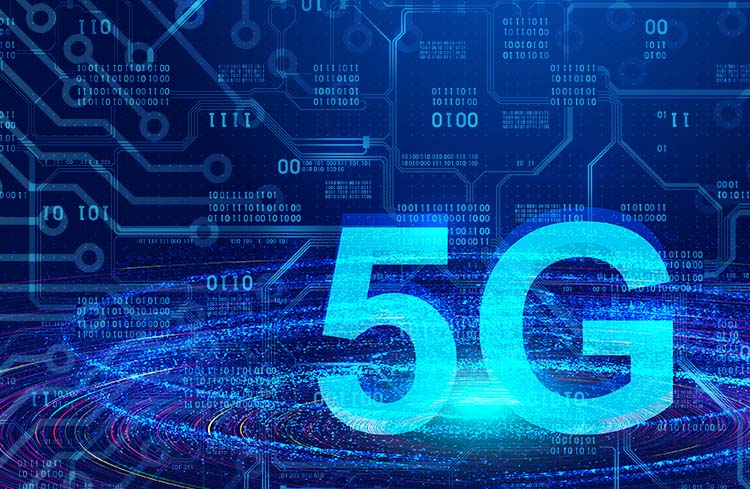
With the evolution from 4G to 5G, communication service providers (CSPs) are finding that it’s not enough to just replicate a 4G network with newer technology — 5G requires new approaches and new ways of thinking. This includes the introduction of a 5G Core architecture.
To build a truly optimized 5G core network, there are six areas that are essential for success: the 5G Core application at the center, new automation capabilities, evolved security architectures, new operations and lifecycle management, evolved cloud infrastructure and 5G voice implementation across the network. Let' s take a deeper look at each.
1. Cloud native infrastructure
To realize the business opportunities 5G offers, the core network needs to support cloud native network functions and container-based software. This is done by introducing a Cloud Native Computing Foundation (CNCF) certified container as a service (CaaS) platform based on Kubernetes. Key characteristics of this platform include efficient automation of continuous integration/continuous delivery (CI/CD) loops, automated life cycle management (LCM) and operations of containerized network functions (CNFs) over a managed software defined infrastructure (SDI). All this is a very technical way of explaining how a holistic view of cloud-native introduction is key to enabling CSPs to manage their networks more efficiently, while also being able to roll out additional services and experiences to delight customers and further monetize their offerings.
2. 5G Core (5GC)
5G is not only about introducing 5G new radio (NR). To fully enjoy and implement the full capabilities of 5G, as defined by 3GPP, the new 5G Core (5GC) is a prerequisite in combination with 5G NR Standalone. Going forward this will only be accentuated further as 5GC will be the platform for innovation and standardization. The new 5GC represents a paradigm shift. A new Service-Based Architecture (SBA) is introduced, which is designed for cloud native implementation, and represents new opportunities and challenges as it transforms the current way software is secured, automated and lifecycle managed.
3. 5G voice
All service providers deploying 5G networks must also consider how to deploy mobile voice services in the network. With 5G, there are new opportunities to develop even more advanced voice and communication services, including interactive calling, combinations with AR and VR and other future real-time communication services. The introduction of 5G voice will happen in different technology evolution phases, depending on the speed at which nationwide 5G coverage is available, as well as device capabilities. CSPs should carefully plan the 5G voice service evolution to secure optimal voice/data performance in 5G networks.
4. Automation and orchestration
Increased automation and improved orchestration are a must to manage the new capabilities and complexities 5G offers. It offers improved control of operational costs and greater ability to comply with future business requirements. It also needs to cover multi-domain and end-to-end services. Traditional “silos” will have to be replaced with a more horizontal service-based approach, where cross-domain end-to-end (E2E) orchestration will become a business need. One example of this is network slicing, which will be crucial to address new business opportunities in both the enterprise and consumer segments.
5. Operations and life cycle management
The deployment of 5GC marks the first time the cloud native technology will be introduced into the core of the mobile networks, which will bring benefits such as software decomposition and improved life cycle, higher agnosticity between applications and underlying infrastructure, higher levels of application resilience and increased degrees of automation and orchestration.
CSPs need to look at introducing modern solutions to address the operational challenges while also scoping an architecture with legacy and virtualized components at the core. This means investing in technology that can move them closer to a zero-touch network, for quick creation and delivery of innovative services that also leverage edge computing and network slicing.
6. Security
With new uses cases and the increased number of connected devices the network will be more exposed to threats. Security is not only about detecting threats and providing mitigation. It is a complete structure ranging from the implementation of security standards all the way up to monitoring and operating a range of security applications across the whole 5G network.
With the introduction of a cloud native 5G Core, current solutions and future needs to be evaluated — and automated. Security automation offers the capability to scale up security management across the entire network easily, stay on top of the security status and swiftly react to new security risks. It will enable CSPs to constantly stay protected by adapting their security posture to the evolving security risk landscape. This also opens various business opportunities in security.
With a focus on these six areas, CSPs can build an optimized 5G Core (5GC) architecture and begin to monetize on the opportunity 5G presents.
Source: https://www.rcrwireless.com/20220621/architecture/%ef%bf%bcsix-key-elements-of-an-optimized-5g-architecture-reader-forum

